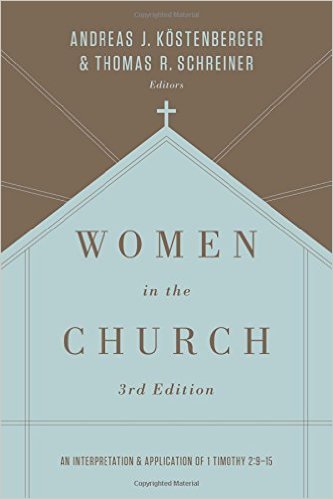A Brief Book Summary from Books At a Glance
by Kirsten Birkett
Contents
Introduction
1. A Foreign World: Ephesus in the First Century (S. M. Baugh)
2. The Meaning of Αὐθεντέω (Al Wolters)
3. A Complex Sentence: The Syntax of 1 Timothy 2:12 (Andreas J. Köstenberger)
4. An Interpretation of 1 Timothy 2:9–15: A Dialogue with Scholarship (Thomas R. Schreiner)
5. Familiar Paths and a Fresh Matrix: The Hermeneutics of 1 Timothy 2:9–15 (Robert W. Yarbrough)
6. New and Old Departures in the Translation of ΑὐθεντεÃν in 1 Timothy 2:12 (Denny Burk)
7. Application: Roundtable Discussion
Conclusion
Appendix: LXX and First-Century Greco-Roman Syntactic Parallels to 1 Timothy 2:12 (Andreas J. Köstenberger)
General Summary
A collection of scholarly papers concerning aspects of the exegesis and application of 1 Timothy 2:9-15.
Introduction
Some essays are entirely new; others are substantially rewritten from the first edition. A new “virtual roundtable” replaces the single-author chapter on application.
Chapter 1: A Foreign World: Ephesus in the First Century
M. Baugh
Earlier versions of this essay presented an overview of Ephesian society, based on every extant source, including some 6000 inscriptions; this version also takes into account more recent studies. It looks at the early to mid-AD 60s. Ancient Ephesus was well positioned for commerce. Its cultural heritage was Greek but for centuries the city was under foreign control (Roman in Paul’s time). It had been pillaged by Mark Antony, and was set back by an earthquake in 23AD, but was recovering by the mid-century, although under tension due to Nero’s tumultuous reign. Second-century fortunes were much worse, so we must beware “importing later cultural practices and Roman influences directly into mid-first-century Ephesus.”
First-century Ephesus had a fundamentally patriarchal structure, with a few women in high-status priesthoods. All civic functionaries were male. Central families controlled the city for generations. Artemis Ephesia dominated public religion, but temples also included the other Greek deities and some imports. Records show that the majority of the priesthood, even of the goddesses, was (unusually) male. Tourism to the Artemisium brought in considerable income. It was the city’s dominant economic power, as bank, moneylender and landholder; and civil magistrates controlled it, with input from Roman governors. Under the priests were kouretes, “young warriors;” another group were the neopoioi, something like a board of trustees for property; essenes were an annual priesthood. Men thus filled the principal positions in politics and religion. . . .
[To continue reading this summary, please see below....]The remainder of this article is premium content. Become a member to continue reading.
Already have an account? Sign In
